Courtly Love
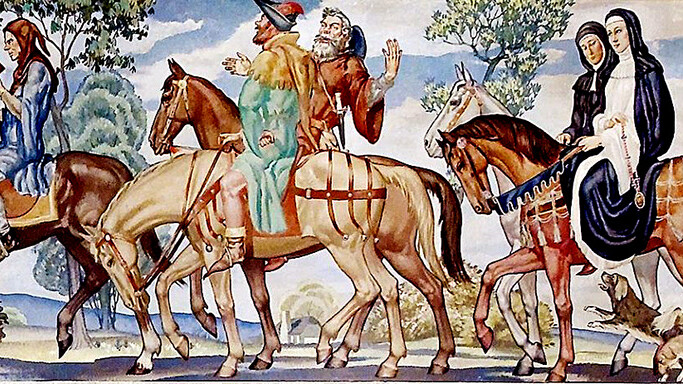
Courtly Love
 At this time of year, if you walk through the beech arches into the Wood of Goodwill and turn left, just ahead of you is a rather indeterminate green shrub which most people would barely even notice. It is planta genista (broom) which later on will be covered in masses of small, pea-like yellow flowers.
Growing freely and widely, it is said that, just before a great battle, Geoffrey of Anjou (1113 –1151) plucked a sprig of broom and tucked it into his helmet so his troops would recognise him. It became his emblem or crest and from 1154 to 1485, a period of 331 years, his descendants became known as the Plantagenet Royal family of England.
The 14th century is in some ways considered a golden age in England. Much of the century was dominated by the Plantagenet King Edward III who was an admired ruler and warrior. His reign was a time of
At this time of year, if you walk through the beech arches into the Wood of Goodwill and turn left, just ahead of you is a rather indeterminate green shrub which most people would barely even notice. It is planta genista (broom) which later on will be covered in masses of small, pea-like yellow flowers.
Growing freely and widely, it is said that, just before a great battle, Geoffrey of Anjou (1113 –1151) plucked a sprig of broom and tucked it into his helmet so his troops would recognise him. It became his emblem or crest and from 1154 to 1485, a period of 331 years, his descendants became known as the Plantagenet Royal family of England.
The 14th century is in some ways considered a golden age in England. Much of the century was dominated by the Plantagenet King Edward III who was an admired ruler and warrior. His reign was a time of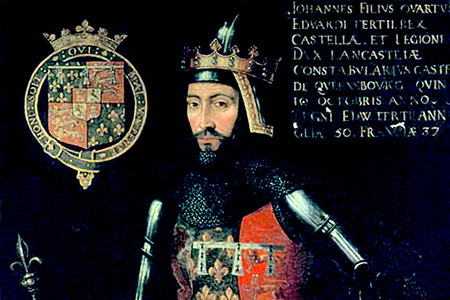 remarkable architecture, literature and political success. His sons were successful soldiers and statesmen and his third son, John of Gaunt later Duke of Lancaster, became one of the wealthiest men in the country.
King Edward III sought to bolster the sense of community and idea of “nobility” amongst the aristocracy and squirearchy and in 1348 he created a new order of chivalry, the Order of the Garter. There was a new elegance to court life and a delight in elaborate ceremonies with a focus on manners and style. Great importance was placed on proper speech and visitors were entertained with "noble conversation”.
remarkable architecture, literature and political success. His sons were successful soldiers and statesmen and his third son, John of Gaunt later Duke of Lancaster, became one of the wealthiest men in the country.
King Edward III sought to bolster the sense of community and idea of “nobility” amongst the aristocracy and squirearchy and in 1348 he created a new order of chivalry, the Order of the Garter. There was a new elegance to court life and a delight in elaborate ceremonies with a focus on manners and style. Great importance was placed on proper speech and visitors were entertained with "noble conversation”.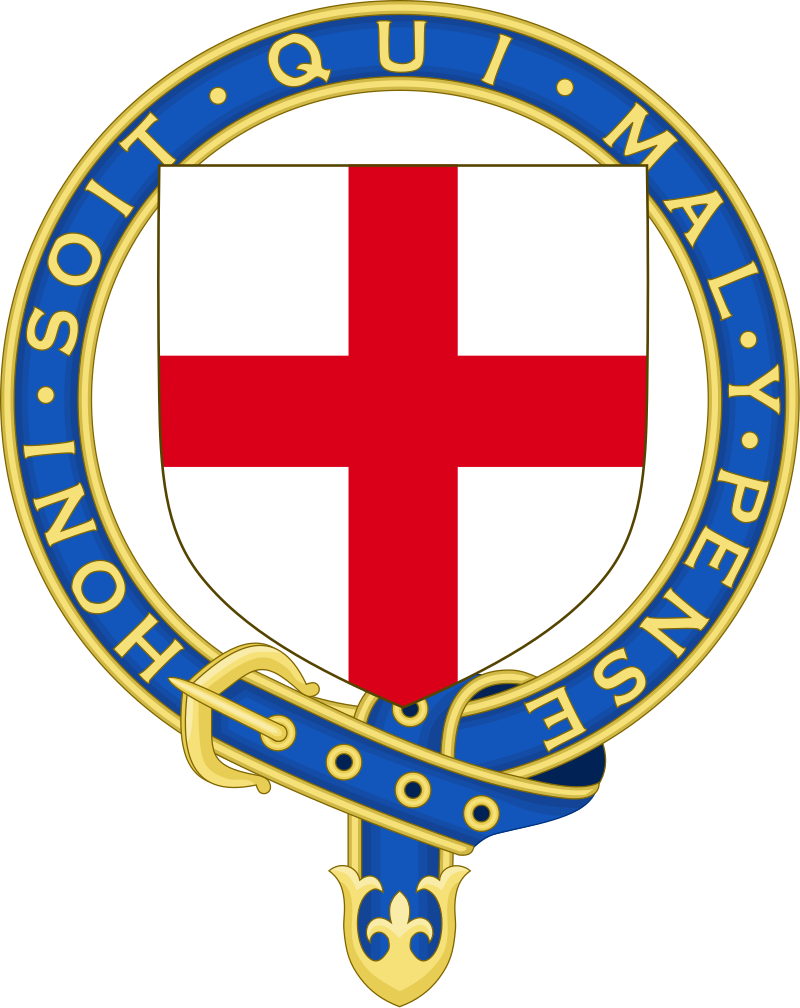 The main characteristics of courtly love - courtesy, humility and the “religion” of love - were almost entirely expressed in literature and speech and bore little resemblance to the realities of the time but it was a lovely ideal for the ladies to admire. Edward III is said to have written the following for his eldest son, the Prince of Wales:
Love ladies and maidens
And serve and honour them
in thought, word, and deed ...
From ladies comes prowess,
Honors, and dignities ...
The main characteristics of courtly love - courtesy, humility and the “religion” of love - were almost entirely expressed in literature and speech and bore little resemblance to the realities of the time but it was a lovely ideal for the ladies to admire. Edward III is said to have written the following for his eldest son, the Prince of Wales:
Love ladies and maidens
And serve and honour them
in thought, word, and deed ...
From ladies comes prowess,
Honors, and dignities ...
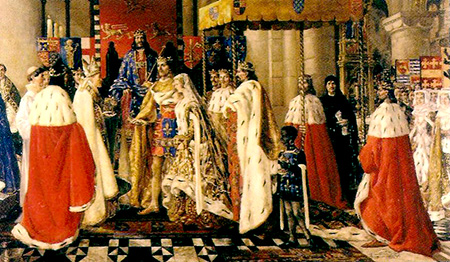 Meanwhile his younger son was a close friend of the poet Geoffrey Chaucer. When John of Gaunt was eventually allowed to marry his mistress of nearly 30 years Katherine (de Roet), he became Chaucer’s brother-in-law as Katherine’s sister Philippa was married to Chaucer.
It is not known whether John of Gaunt or Chaucer visited Highclere but the Prince of Wales did reputedly stay here and enjoy some hunting whilst John of Gaunt’s second son with Katherine, Henry, Cardinal Beaufort 1375-1447, did become Bishop of Winchester and thus the owner of Highclere at that time.
During the 14th century, Highclere was a much-admired medieval palace and one of the several homes belonging to the Bishopric of Winchester. One of the most influential and respected churchmen of the time, and a previous Bishop of Winchester, was William of Wykeham. A simple yeoman farmer’s son born here in Hampshire, William of Wykeham became Chancellor of the Exchequer and the second wealthiest man in England after John of Gaunt. Both men moved in the same circles sometimes on better terms but at loggerheads at others.
Meanwhile his younger son was a close friend of the poet Geoffrey Chaucer. When John of Gaunt was eventually allowed to marry his mistress of nearly 30 years Katherine (de Roet), he became Chaucer’s brother-in-law as Katherine’s sister Philippa was married to Chaucer.
It is not known whether John of Gaunt or Chaucer visited Highclere but the Prince of Wales did reputedly stay here and enjoy some hunting whilst John of Gaunt’s second son with Katherine, Henry, Cardinal Beaufort 1375-1447, did become Bishop of Winchester and thus the owner of Highclere at that time.
During the 14th century, Highclere was a much-admired medieval palace and one of the several homes belonging to the Bishopric of Winchester. One of the most influential and respected churchmen of the time, and a previous Bishop of Winchester, was William of Wykeham. A simple yeoman farmer’s son born here in Hampshire, William of Wykeham became Chancellor of the Exchequer and the second wealthiest man in England after John of Gaunt. Both men moved in the same circles sometimes on better terms but at loggerheads at others.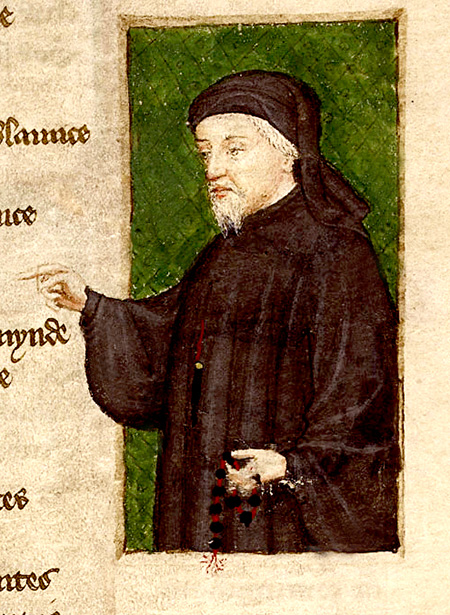 I have long been fascinated by all these characters and have been an admirer and student of Geoffrey Chaucer since school. His language, poetry and characters live with us today, most famously in The Canterbury Tales, from the perfect chivalric gentle knight to the chattering Wife of Bath.
In the “Parliament of Fowls”, Chaucer was also one of the first recorded poets to write about “romantic” love: perhaps earliest known Valentine poem?
“For this was on seynt Valentynes day,
Whan every foul cometh ther to chese his make”
The distinction in his time was the conviction that courtly love was wholly admirable -- that love was not only virtuous in itself but the very source and cause of all other virtues.
I have long been fascinated by all these characters and have been an admirer and student of Geoffrey Chaucer since school. His language, poetry and characters live with us today, most famously in The Canterbury Tales, from the perfect chivalric gentle knight to the chattering Wife of Bath.
In the “Parliament of Fowls”, Chaucer was also one of the first recorded poets to write about “romantic” love: perhaps earliest known Valentine poem?
“For this was on seynt Valentynes day,
Whan every foul cometh ther to chese his make”
The distinction in his time was the conviction that courtly love was wholly admirable -- that love was not only virtuous in itself but the very source and cause of all other virtues.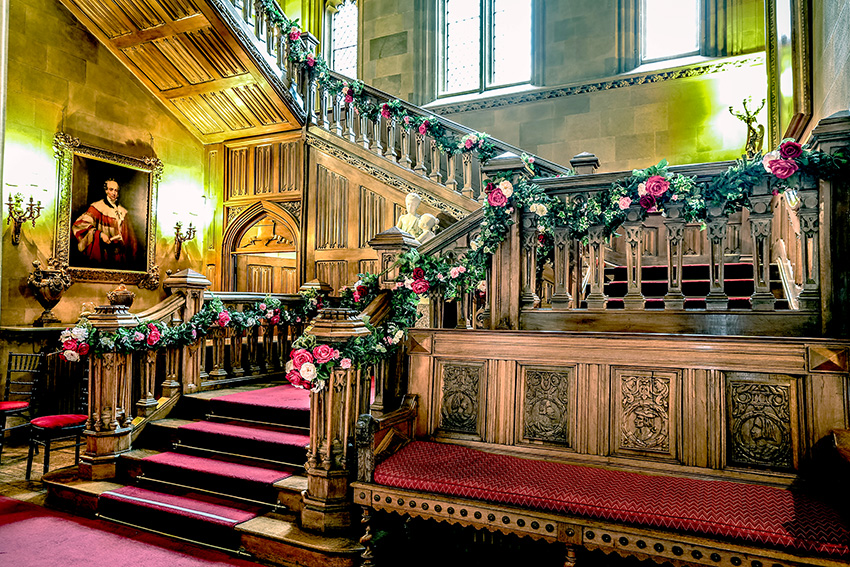 We will shortly be welcoming guests here for our Valentines Day celebrations, a Christian feast day in honour of a martyr named St Valentine.
We will shortly be welcoming guests here for our Valentines Day celebrations, a Christian feast day in honour of a martyr named St Valentine.
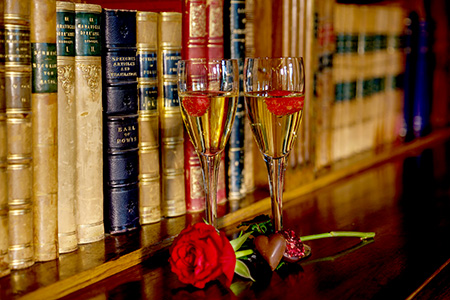 During the 600 years or so since Chaucer’s time centuries, February 14th has developed into a significant cultural and, it has to be said, commercial celebration of romance and love in many parts of the world. Yet underlying it are the same desires and hopes as expressed by Thomas à Kempis 600 years ago:
"Nothing is sweeter than love, nothing higher, nothing stronger, nothing larger, nothing more joyful, nothing fuller, and nothing better in heaven or on earth.”
During the 600 years or so since Chaucer’s time centuries, February 14th has developed into a significant cultural and, it has to be said, commercial celebration of romance and love in many parts of the world. Yet underlying it are the same desires and hopes as expressed by Thomas à Kempis 600 years ago:
"Nothing is sweeter than love, nothing higher, nothing stronger, nothing larger, nothing more joyful, nothing fuller, and nothing better in heaven or on earth.”
39 Comments
Dear Lady Carnarvon,
As always a beautifully written piece!
You manage to squeeze in many interesting facets of history sprinkled with amusing characters, lovely poetry, boundless joys found in nature with stunning Highclere bringing it all together.
Thank you..I look forward to your next piece.
Julie Tirrell
Good morning Lady Carnarvon
Greetings from a dull, overcast day here. I think your closing quotation particularly endearing. And even though Valentine's Day focusses on romantic love, I see it is a celebration of all love....whether between romantic partners, friends, parent and child, pet owners and their fur children...to have known love's sweet touch is to have lived a blessed life. Aren't we the lucky ones?
Best wishes for a joy filled celebration.
Happy Valentine’s Day to a lovely and gracious couple! Love is surely in the air at Highclere!
L❤️VE your blog today❣️ Thanks for sharing with us this interesting bit of history
As always Fiona, thank you for such a lovely history of so many we love and admire and history I was not aware of....Happy Valentine's Day to YOU....xo
I read Anya Seton’s novel “Katherine” about John of Gaunt and his eventually-third wife, and have loved it since I was a teenager. It made me aware of how fascinating (as well as tragic) a time and place 14th century England was, and started me on my interest in reading about English history, as well. Thanks for this blog post which brought back those memories!
Such a romantic time. Great article. Have a great Valentine celebration.
That is also one of my favorite books of all time! I also read it as a teenager in the early 70s, borrowed from a friend’s mother. Many years (30 or more) went by in which I often thought about that book, but couldn’t remember the title or author. Then one day browsing in a Barnes & Noble bookstore, I picked up a book and read the back, and “That’s my book!”
Thank you, Lady Carnarvon, for your blog today which has prompted me to read “Katherine” again.
Love your history lessons! The stairway is totally beautiful with flower garlands. Thank you for sharing.
Lady Carnarvon,
Thank you for your stories which inform and entertain. I hope the Valentines Day Celebration is glorious and though I will not see all fo it, at least I got to see an inkling of what it looks like.
I am so fascinated by Highclere. The land and Castle have seen so much; from royalty, to horse racing expertise, from Egyptian exploration to WW2 plane tragedies, from home to hospital, from financial threats to revitalized coffers in the form of a wealthy wife, and from families living and thriving throughout the generations, and a fictional Downton Abbey with it’s family bringing Highclere once again into the limelight. I simply love reading your stories and histories. You write beautifully, and your love of Highclere shines through. Thank you once again for another peek into history as it connects to Highclere.
—from suburban Chicago
Thank you Jody
Hello Lady Carnarvon.
Like your link with the Bishop of Winchester.
Introduces 3 prominent ladies in our history,
Margret Beaufort, Elizabeth Woodville and Elizabeth of York.
Any snowdrops yet?
Yes lots of snowdrops and daffodils are on the way too - Hurrah
Snow drops there are so wonderful at Highclere and also to see throughout February and especially walking through The Historic Welford Park, not far from Newbury England this month during their Snow Drops Blooming Festival planted centuries ago by Monk Residents that still bloom these days and have multiplied to thousands more. Great place to tour & walk through if loving Snow Drops!
Thank you Lady Carnavon for another lovely piece and a great history lesson. I so look forward to reading your compositions each Monday morning. Although I am American, I have long been interested in and read voraciously regarding British history. One of my dearest friends who is English often keeps me straight regarding your history. I am so excited to be visiting Highclerc in September.
A very Happy Valentine’s Day to you and yours.
How lovely thank you
This post is warm and inspiring. Our wedding anniversary is Valentines Day. Have a beautiful time celebrating at Highclere.
MOST INTERESTING READ THANK YOU .
Such a rich and interesting history! It would be a dream come true to celebrate Valentine’s Day at Highclere. I hope those visiting that day enjoy every moment.
Dear Lady Carnarvon: I so enjoy receiving your e-mails each week. I learn so much from them. Oh how I'd love to be a bug on the wall this Wednesday to watch the festivities. It is so amazing to me how you accomplish so much, you and your staff are amazing. Thank you for keeping us Highclere lovers so well informed.
Well done! Enjoy your event -:)
Sincerely, Corinne
As usual a thought-provoking piece, managing with elegance and brevity, to encompass history, literature, architecture and St Valentine's Day. Accompanied by some gorgeous illustrations and signed off with the fabulous Thomas a Kempis quote. A lovely aperitif on a sunny, blue-skied Monday morning. Thank you Lady Carnarvon
A lovely Monday morning delight! Oh the memories of Chaucer class!
Interesting England history details & photos from so many centuries ago and its connection to St. Valentines Day. How wonderful for all of your guests able to attend your St. Valentines Day Event.
Good luck with hosting and Happy Valentines Day to you and Lord Carnarvon.
I will always feel St. Valentine's Day the way it was so beautifully expressed by Thomas A. Kempis 600 years ago. So romantic! Happy Valentines Day!
Barbara Ann Dabrowski
Ahhh! And what a wonderful world it would be if more of us would aspire to this goal. A rather futile wish, I know, but what I do know is that a single act of kindness has the ability to change the world.
Beautiful!
Dear Lady Carnavon,
I worked for many years in a stone 100+ year old Manor house in Lancaster, Massachusetts USA. The library has a border near the ceiling of The Cantebury Tales. It is made of silk and needs a delicate cleaning that no one is brave enough to take on. Happy Valentines Day.
Lady Carnarvon......To that, I want to wish you and Lord Carnarvon a very sweet and loving Valentine's Day. But more so, have a wonderful 25th celebration next weekend with all my best wishes.
You are kind!
Edward III was a very smart man! Happy Valentine's Day to you!
My husband and I were married on St. Valentine's Day, 2004 at All Saint's Church in Hursley, Hampshire. Our reception was in the beautiful great room of Winchester Guild Hall. So this is a very special day for us and our 20th anniversary. And truth be told, we are still on our honeymoon. Thank you for this message of love in the days of chivalry.
Thank you for the wonderful history lesson and the beautiful quotation at the end! The 14th is special for me because it’s my birthday! Happy Valentine’s Day to you and yours too!
Dear Lady Carnarvon,
Thank you for this fascinating and timely blog. In particular, the information about the broom shrub and the Plantagenets is so interesting. I am sure that your upcoming Valentine celebrations will be successful and enjoyed by all with whom you share your lovely Highclere.
Suzanne in Georgia (US)
Happy valentine day to you and lord caranvron and happy pancake day tomorrow and fan of Downton Abbey and highcelere castle thank you for send me your email
I never knew the meaning of the Order of the Garter, and I love this story behind it. Now I'm thinking back of everyone I've ever heard who received it.
Val in Calif.
It is quite special
What a romantic Post! Me too I've been an admirer of Chaucer since school, lovely memories...Have a wonderful week
Happy Valentines Day to you and yours. With sincere thanks and love.
Dear Lady Carnarvon,
I have just signed up to receive your blog. Already I am so glad that I did. This was fascinating information, and your Valentine decorations are beautiful! I look forward to reading future posts. We are traveling for the first time to Scotland and England during late April through early June. Your beautiful home will be one highlight of our trip.
Carolyn McLean Stark in Tennessee (US)
Look forward to seeing you
Dear Lady Carnarvon,
Your blog is the best history lesson I have had since my university years. Thank you so much for the wealth of information. The history of the United Kingdom has always been an interest of mine. Take care. Susan
You are very kind
I too read and was fascinated by Anya Seton’s “Katherine.” I appreciate Highclere even more now that I know her son was the owner! And I had a friend whose nickname for me was Ginestra, which is the Italian word for broom. I was always so pleased, particularly after he explained to me that the name Plantagenet derived from it. Your blog is always so entertaining, informative and fascinating. Thank you so much! Or, as kids these days would say, tysm!
Thank you for this wonderful post.
I have just returned from a special family gathering to celebrate 200 years of my husband's family arriving in Australia. One of the relations has done a family tree which shows that my husband's family is descended from John of Gaunt through his son Henry, Cardinal Beaufort. His daughter Joan Beafort married Sir Edward Stradling and Henry Stradling, his son then married Elizabeth verch William Herbert who is doubly connected to us through the Thomas line.
So, we have a connection to this story and, it seems to Highclere as well!!
Amazing!
Thank you for the delicious history. That is a fascinating period and I read as many novels
as I can find of the early English history, which we in the U.S. consider our own.
Very educational. Really enjoyed reading your column.
Beautiful, beautiful, Happy Saint Valentin e´s Day
Dear Lady Carnarvon:
Thank you for this Monday's blog.
I continue to enjoy reading the brief weekly English history lesson and learning more about Highclere. The picture of the garland-wrapped staircase is just beautiful.
This year (St.) Valentine's Day will take on a deeper meaning of love as it falls on Ash Wednesday, the beginning of the Lenten Season.
I hope you and Lord Carnarvon had a Happy (St.) Valentine's Day.
Until next week.
Perpetua Crawford
Dear Lady Carnarvon:
Sending a warm hearted Happy St Valentine's Day . Enjoyed the many recipes you've shared, sending my Mom's guacamole recipe, please feel free to share.
Granny's Guacamole
2 ripe avocados
1 med tomato chopped
2 Tbsps finely chopped onion
2 Tbsps lemon juice
1/2 tsp salt
1/2 tsp garlic powder
3-4 drops hot sauce
Mash avocado, combine with other ingredients, cover tightly and chill, serve with tortilla chips.
My personal add on, a delicious margarita
P.S. The marmalade recipe is absolutely the best. Served on a toasted bagel loaded with cream cheese is a forbidden indulgence.
Best Regards,
Laura Karnes
Please forgive the "errors" my cell phone is not "happy" today being overworked.
Thank you!
Leave a Comment
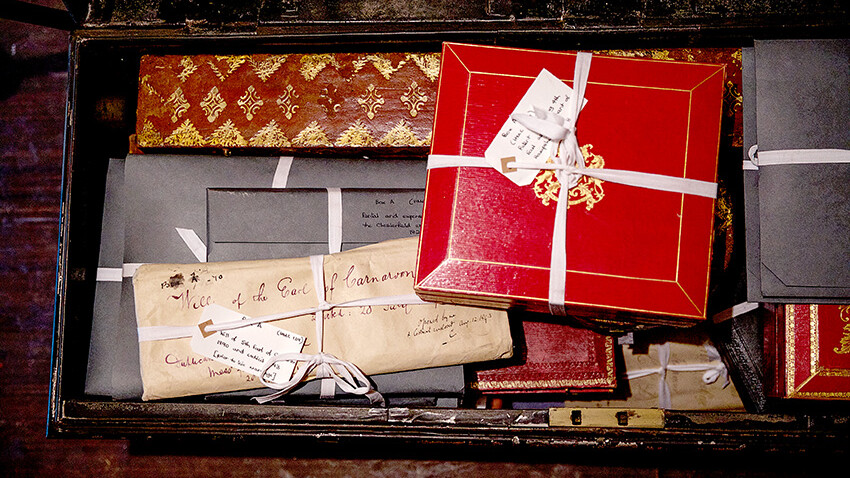
- Christmas
- Community
- Dogs & Horses
- Egypt & Tutankhamun
- Entertaining
- Farm
- Filming
- Gardens
- History & Heritage
- Daily Life
- Royalty
- Cooking
- Interiors
- Heroes
- Architecture
- Cars
- Conservation
- Downton Abbey
- Events
- Gardens & Landscape
- Highclere Castle Gin
- History
- Planes
- Restoration
- Stories & Books
- Uncategorized
- Visitors
- Wildlife

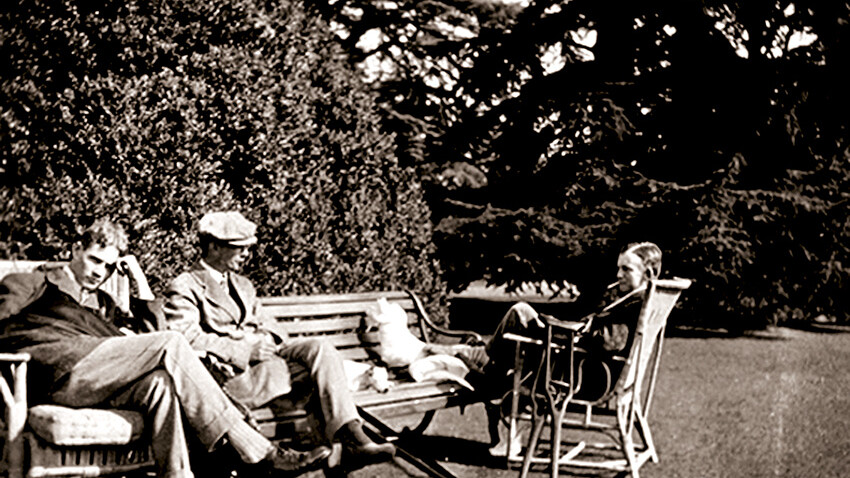


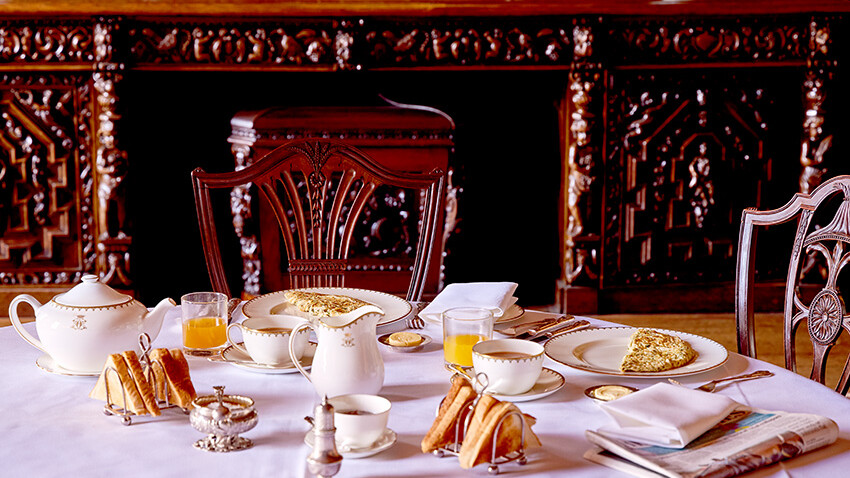
Lady Carnarvon,
A Happy Valentine’s Day to you and your dear Lord Carnarvon! From centuries long ago we honor those, who like Chaucer and John of Gaunt, honored love and its fidelities! Chaucer to his wonderful poetry, and the Duke to his mistress and their help in founding the Tudor line! Thanks for the lovely lines from Thomas a Kempis… soft on the heart!
Martha
Sorry I just read this, my question is who and what was Chaucer?
Oh my goodness - Chaucer was a great poet and writer of the 14th century ..
Chaucer - Shakespears - Goethe - one of the greats..